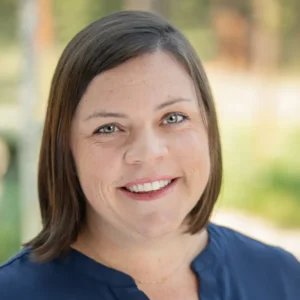Did you know that more school districts in Colorado operate on a four-day school week than in any other state?
Some other fast facts:
With four-day weeks becoming more prevalent across the state—particularly in rural communities—it’s important to get the bigger picture.
We spoke with Antonio Parés of the Donnell-Kay Foundation, who has been studying and working in four-day districts for the past 18 months. For Parés, the four-day week creates intriguing possibilities for students to expand their learning environment beyond the four walls of a classroom. It also presents businesses with an opportunity to help design work-based learning experiences.
Colorado Succeeds: Why has the four-day week grown in popularity?
Antonio Parés: Initially, it was seen as a cost savings, but that hasn’t really proven to be the case. If you have to keep your building open for other uses, if you’re still running buses, and if contracted employees are still paid the same amount, savings are negligible. So, it has come down to two other factors.
- First, it has been a tool for recruiting and retaining teachers. Teachers love the extra planning time as well as the longer weekend. When one district in a region adopts the four-day week, it’s a recruitment advantage that puts pressure on other districts to operate on four days as well.
- Second, it is also popular with parents in rural communities. Many communities are far from doctors, dentists, and other facilities. To have a weekday for kids’ various appointments is seen as very beneficial. The four-day school week has also allowed for sports to operate on a weekday – making travel slightly easier.
Colorado Succeeds: What are some of the more intriguing things you’ve seen districts and communities do with the fifth day?
Parés: The Peyton district east of Colorado Springs started a woods manufacturing program with the fifth day. It was so popular and successful that it now operates throughout the week and draws students from neighboring districts. Companies that build woods manufacturing machinery send their latest models to Peyton. Businesses benefit, and students are deeply engaged and using skills that will benefit them throughout their lives.
Campo district in southeastern Colorado has just under forty kids. They’ve been on the four-day calendar for 20 years. The superintendent, Nikki Johnson, has a deep belief in youth leadership and agency and urges students to take ownership of the fifth day. Donnell-Kay helped students go through a design thinking process to identify passions, interests, and community assets. The result: students wanted theater, arts, and dance. Adults in the community with experience in these areas have jumped in and volunteered their time. It’s been so popular during the school year that the students recently turned it into a summer program.
At times, the education community convinces itself that students don’t, won’t, or worst of all, can’t take ownership of their own learning. And then you see something like what has happened in Campo, and you realize the ownership is always there, but the current paradigm in education reform precludes that at times.
Colorado Succeeds: What are the opportunities for businesses in these communities?
Parés: Typically, when businesses are asked to come in and do something with a school, it’s often on that district’s terms. The fifth day creates a space where a business can build and do their own thing. Every year, the demands on the labor force are going to change. Employers know what they need and can build something that is fast, responsive, and on their terms. They can bring students in in ways that make the most sense. And ultimately, that’s going to benefit students more than the old way of doing things.
Employers could also benefit from new or expanded state and federal tax credits, such as the Colorado childcare tax credit. Businesses and individual donors can get a 50 cent credit for every dollar donated up to $200,000 in contributions to designated child care programs, which include after school and community based programs. In other words, a business could donate $200,000 to a child development program and get $100,000 knocked off their state tax liability. The state tax credit used to apply to kids up to 18, but was lowered to age 12 in 2004. If we could get it back up to 18, businesses could develop and/or invest in apprenticeship programs, internships, and other valuable work-based learning experiences on their own, or in partnership with a nonprofit, and get a tax incentive to do so.
Colorado Succeeds: What’s on the horizon?
Parés: Brighton/27J School District will be fascinating to watch, because it’s unique nationally in the four-day space. It’s very different than a rural district, and you’ll have parents who live in Brighton but work in Denver. The fifth day may be problematic for them unless the district has robust programming to keep children occupied in meaningful ways on the fifth day. The district is offering childcare for $50 per day, but that’s a lot of money for some families, especially when the fifth day used to be free. Brighton will also be interesting to learn from due to its size and the availability of its data. Many of the rural districts using the four-day school week have such small sub populations that their data is masked by the state, which makes it difficult to analyze the academic impact of a four-day school week.
Click here to learn more about the Donnell-Kay Foundation’s efforts to leverage the fifth day and a grant program they are supporting alongside the Gates Family Foundation and the Louis Calder Foundation.

